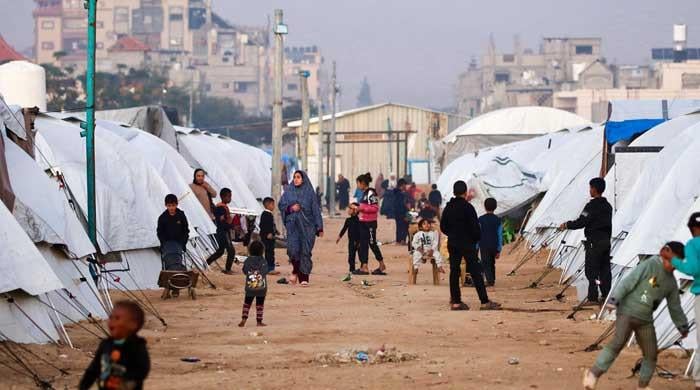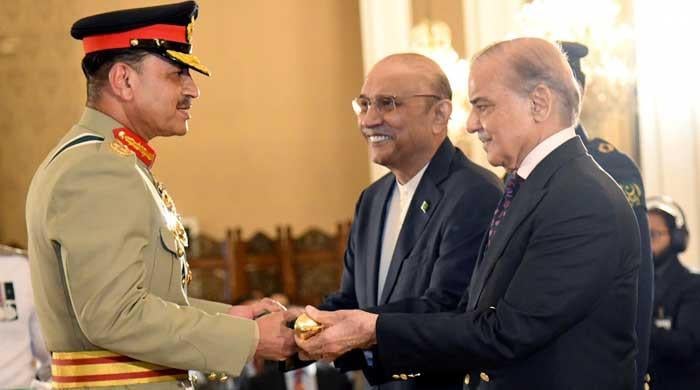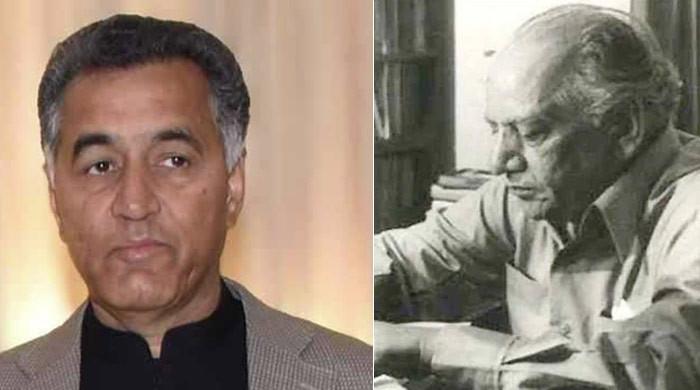A blueprint for Pakistan's growth strategy — Part 3
'Public and private finance must fund more investment and self-reliance would cut our import bill'
June 22, 2022

The first two parts in this series discussed why we keep falling into crisis situations, and the need for the economy to grow. Low public and private investment are behind uneven growth and falling exports. For public investment, the government needs to both cut costs and increase revenue. Tax policy must serve export growth. Public and private finance must fund more investment and self-reliance would cut our import bill.
Tax policy to increase revenue and exports: We already see steps to widen the direct tax base. The government must go further and reduce exemptions. Many exemptions have outlived their utility. Apart from denying the government much-needed revenue, they redirect investment from the manufacturing and export sectors. It is time to reassess tax policy so that it serves our economic goals.
To enable private firms to compete globally, the government may help them scale up. In this regard, the policy to tax inter-corporate dividends needs review. According to the Pakistan Business Council, a number of tax measures hinder investment. Upfront payment of sales tax and income tax are an issue. These conditions also need revision.
It is unfair also to levy more tax on existing taxpayers. The FBR must set separate targets for revenue from existing and new taxpayers.
The problem of low investment: Public and private investment both have fallen. I would have liked the government to take note of this alarming trend and do something about it. So far, there is not even a discussion. Falling growth, exports and the fragile current account are all outcomes of low investment.
Re-cast and increase public investment: There is a strong case to recast the federal PSDP so that it helps raise private productivity. The Planning Commission may develop new metrics for the selection of projects to provide infrastructure and HR aid to exporters. Most new projects must fit into the new criteria. Given its large pipeline, the shift would be gradual.
Also, for years the government has talked about Public-Private Partnership to add to its allocation. PPP is a useful platform to boost public investment. The Viability Gap Fund may be funded by the PSDP. The idea of SEZs has been around for over ten years with no progress. Now, the government has pledged three SEZs. I hope to see them working soon to attract export-oriented FDI. These zones do not just help economic activity. They are good models for city governments to follow. In addition, setting up Special Technology Zones would help greatly to spread the use of tech in the public and private sectors.
Private credit: With government borrowing high, access to credit for most private firms is an ask. The economy and jobs will not grow without private investment. Within the fiscal and monetary framework, the SBP may keep credit flowing. It must have special credit windows for selected export industries
The SBP’s TERF was received well by businesses. They would be happy to see its return. SMEs also need more capital. Credit to targeted SMEs must grow to boost exports in new or traditional industries. Existing sectors such as electric fans must build capacity to compete in the global market. Similarly, our usual exports such as surgical goods, metal products, and sports goods must increase our world market share.
Pakistan must revive Development Finance Institutions. Fixed cost and long-term project loans were key to the industrial growth of the 1960s. DFIs have been done away with on IFI advice. That has not served us well. The private sector needs predictable project finance. Fall in the industry has accompanied a drop in private credit. Another idea discussed for a long but not put into effect is setting up an EXIM Bank: EXIM banks offer export finance at preferred rates. If need be, its initial capital may come from the Export Development Fund.
Private fund for projects: In a cash-scarce economy, private finance can play a key role in industrial growth. This is especially so as the country’s investment needs are far in excess of resources, while FDI is non-existent. Setting up a Pakistan Equity Fund is an option. The fund could be a platform for global investors to invest in Pakistan’s high-growth, high-return sectors. A strategic approach is to establish the first $2 billion private equity with capital from global investors. The Pakistan Equity Fund would be capital protected and managed by an experienced team. It would be a closed-end, off-shore fund.
The fund could have three parts. The Pakistan Opportunity Fund to invest in private projects in consumer goods, food products, and healthcare, among other areas; the Pakistan Climate Change Fund that could invest in renewable energy; and the Pakistan Technology Fund to invest in areas such as Software as a Service or Internet of Things. The fund has the potential to mobilize large sums of capital with a great impact on growth. If done right, it will jumpstart the economy.
I also propose venture capital funds for fintech. The growth of fintech is a sure way to boost productivity in the economy. These funds offer much-needed capital. Global practices show that technology venture capital in a country grows with tax and regulatory incentives. For example, low capital gains tax or incentives for leveraged buyouts and other tech projects would enable the funds to grow. Also, fewer regulatory requirements for private company owners allow them space to make decisions freely.
Taking a cue from growth economies, Pakistan too must offer targeted incentives for exports. The usual tools for doing so are credit at a low rate, duty drawbacks, and workers’ training. These subsidies will not be endless. They must have a sunset clause. Only firms that meet previously agreed technical and export performance benchmarks would benefit.
An increase in e-commerce and online payments will lower transaction costs and create efficiency. They will also bring exporters in Pakistan and overseas buyers in direct contact. The use of cash in the economy should be reduced.
Self-reliance: Domestic energy must have a larger share in our supply mix: The last major energy policy was in 2012. Since 2013, our main focus has been importing LNG. While that is good to tide over immediate needs, building a reliable supply chain is important. The Energy Information Administration of the USA which is an office under the US Department of Energy has identified Pakistan as one of the top shale gas sources.
Shale gas exploration needs complex technology with high costs and great risk. Pakistan must have a separate policy for shale gas that helps access technology and reduce risk. Without such a policy, shale gas would forever be a potential that stays unrealized. Increased production would directly help with the current account deficit. Pakistan must also examine if the 2012 policy needs to be updated to boost the rate of exploration. No cost is too high to build energy self-reliance, as frequent global energy crises have shown us.
We may also incentivize the production of power from green energy, such as hydro, solar, wind, or biomass. Gradually, we will end the import of coal and move to its domestic production.
In the same vein, Pakistan has long talked about mineral exploration. Pakistan could set up the Balochistan Area Development Organization. The organization would offer incentives to domestic and foreign investors in mineral explorations. The government may incentivize with favourable regulation, not with guarantees. Mineral production will have a high impact on growth and prosperity in that province.
Another subject talked about for a long is building substitutes at home for imports. Import of edible oil, pulses, and wheat exact a high charge on our forex reserves. It is time to bring these plans to fruition.
The same goes for the import of raw materials. Pakistan must produce raw materials by offering incentives and R&D support. This would add value to our exports. This won’t happen quickly but is a worthwhile medium-term goal.
This essay offers a plan to revive the economy by moving away from conventional ideas. Its analysis of the problems and flaws in our approach is both new and deep. The list of what needs to be done is long. But it is doable. This is a national cause and must be led from the top with all shades of views in the public and private sectors playing their role. Also, all levels of government must act in unison. Most of all, we need political stability and an uncompromising approach to decision-making by the top leadership. This is the only way to give confidence to all to play their roles. Nations have seen worse and have come out successfully.
Concluded.
The writer, former commerce minister, is chair and CEO of the Institute for Policy Reforms.









